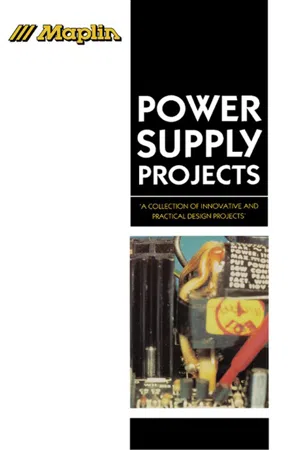
- 208 pages
- English
- ePUB (mobile friendly)
- Available on iOS & Android
About this book
Using circuit diagrams, PCB layouts, parts lists and clear construction and installation details, this book provides everything someone with a basic knowledge of electronics needs to know in order to put that knowledge into practice.This latest collection of Maplin projects are a variety of power supply projects, the necessary components for which are readily available from the Maplin catalogue or any of their high street shops. Projects include, laboratory power supply projects for which there are a wide range of applications for the hobbyist, from servicing portable audio and video equipment to charging batteries; and miscellaneous projects such as a split charge unit for use in cars or similar vehicles when an auxiliary battery is used to power 12v accessories in a caravan or trailer. Both useful and innovative, these projects are above all practical and affordable.
Frequently asked questions
- Essential is ideal for learners and professionals who enjoy exploring a wide range of subjects. Access the Essential Library with 800,000+ trusted titles and best-sellers across business, personal growth, and the humanities. Includes unlimited reading time and Standard Read Aloud voice.
- Complete: Perfect for advanced learners and researchers needing full, unrestricted access. Unlock 1.4M+ books across hundreds of subjects, including academic and specialized titles. The Complete Plan also includes advanced features like Premium Read Aloud and Research Assistant.
Please note we cannot support devices running on iOS 13 and Android 7 or earlier. Learn more about using the app.
Information
Laboratory power
Publisher Summary
Low cost PSU
Circuit description

Construction
Table of contents
- Cover image
- Title page
- Table of Contents
- The Maplin series
- Copyright
- Preface
- Chapter 1: Laboratory power
- Chapter 2: Chargers
- Chapter 3: Inverters
- Chapter 4: Miscellaneous